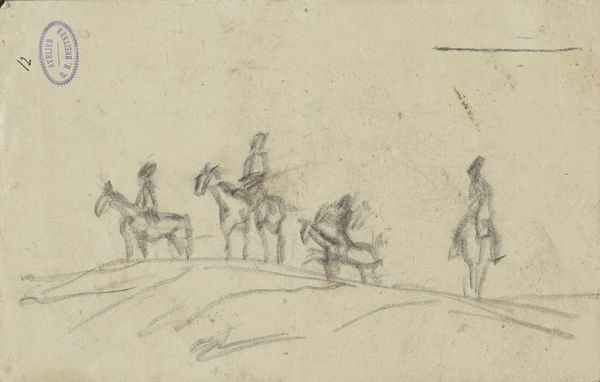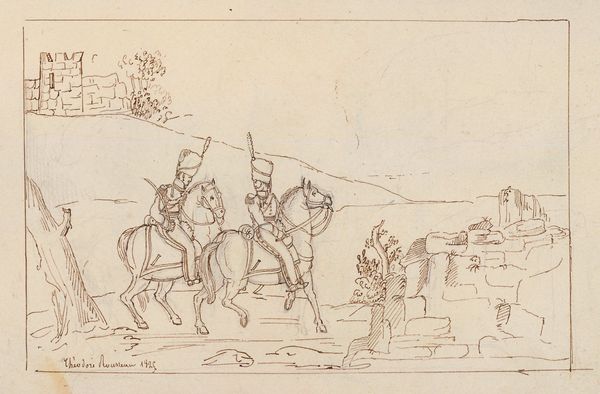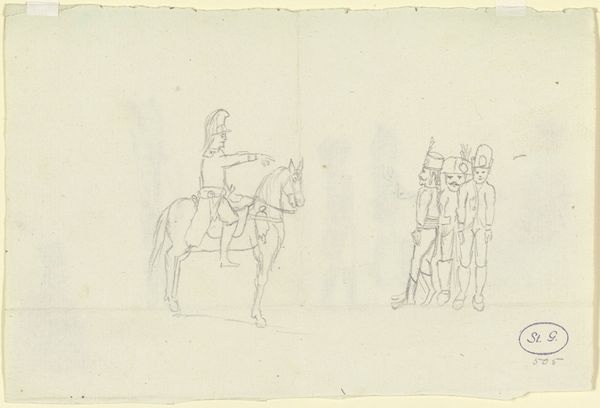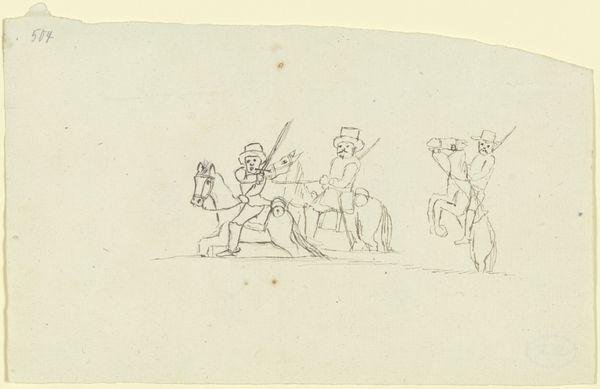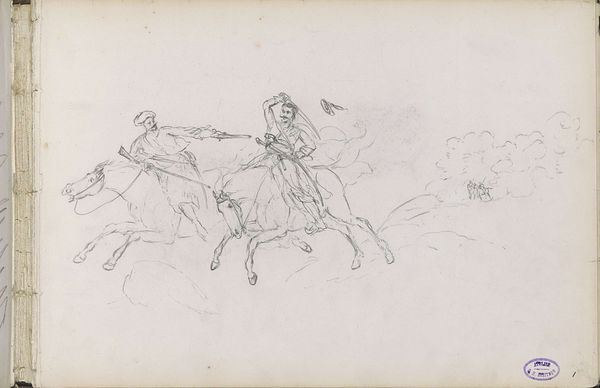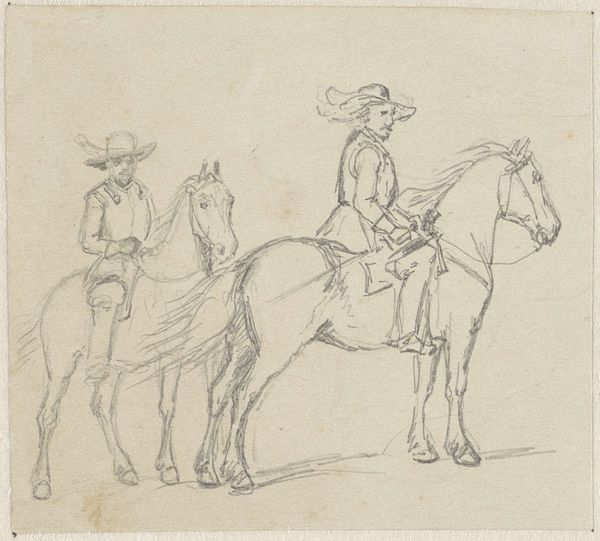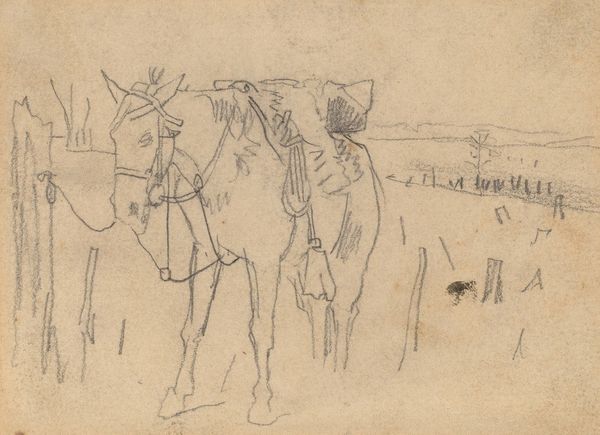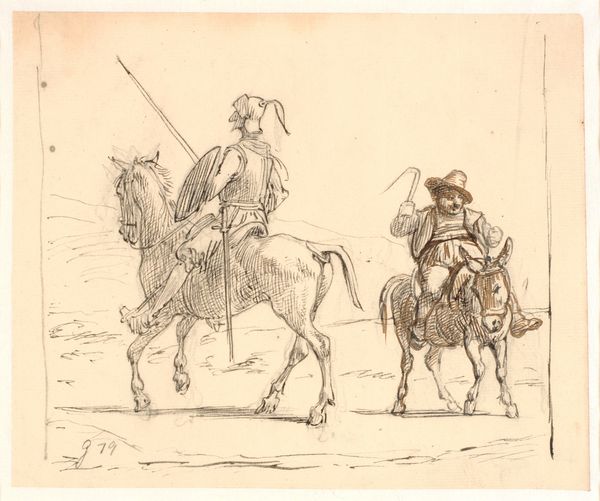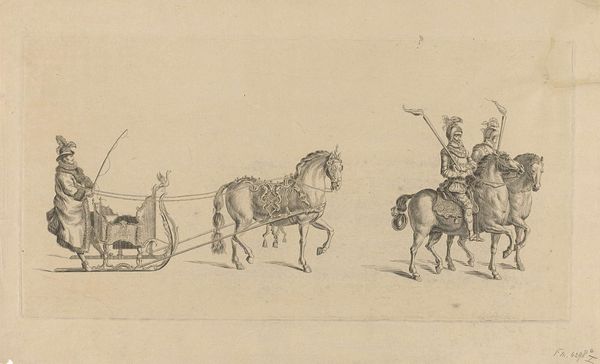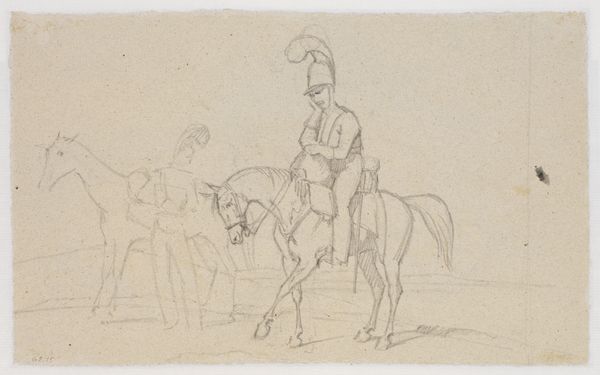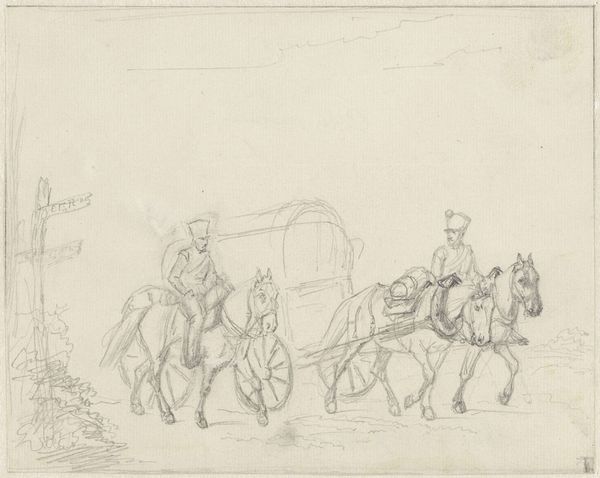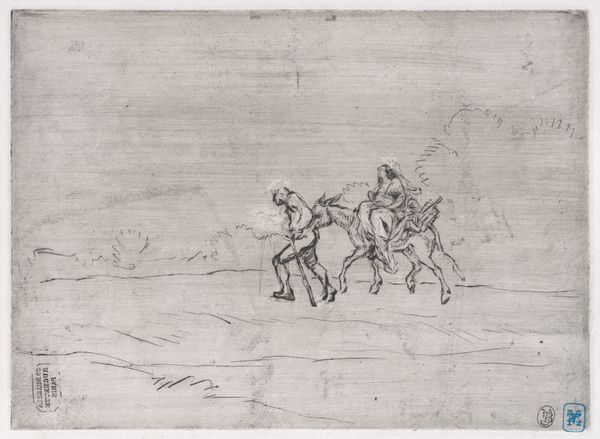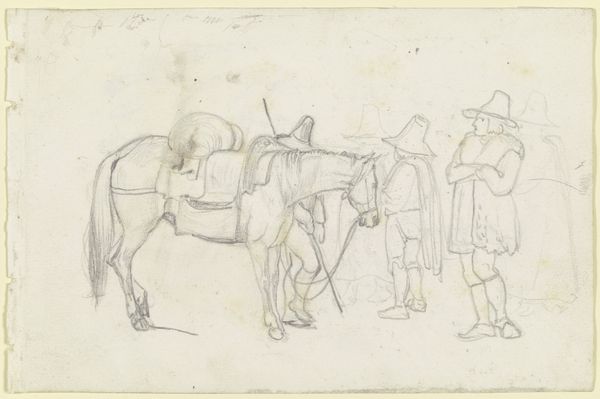
drawing, pencil
#
drawing
#
pencil sketch
#
landscape
#
figuration
#
romanticism
#
pencil
#
history-painting
Dimensions: 6 9/16 x 8 3/8 in. (16.67 x 21.27 cm) (recto)8 3/8 x 6 9/16 in. (21.27 x 16.67 cm) (verso)
Copyright: Public Domain
Curator: Looking at this understated drawing, I’m struck by the feeling of solitude it evokes, despite the presence of military figures. It almost feels like a stage set, with the actors merely pausing before a grand drama. Editor: That's quite a keen observation. What you’re responding to in "Military Figures in a Landscape," is, I suspect, Rousseau’s exploration of romantic themes during the Restoration period in France. Rousseau produced this drawing in 1825. Curator: The simplicity is really remarkable. With just a pencil, he suggests such a vast landscape… and what looks like figures in transit, perhaps burdened or on a mission of consequence. The lone rider and the soldier walking - there's a hint of melancholy. Editor: Exactly, and consider the implications. Here we have an image created during a time of shifting political and social climates, in France. The iconography and uniforms suggest a desire to project power and legitimacy after years of upheaval. However, you correctly perceive the artist's own subdued and almost brooding attitude toward these men. Curator: So the figures aren’t purely celebratory? Editor: I believe Rousseau employs the military figure not just as symbols of might but also as vessels carrying the weight of history, as representations of transitions and the impermanence of power. Note, for instance, the starkness of the lines, how it all feels like a memory rather than a present reality. Curator: I'm thinking also of how the horse and rider are symbols – power, of course, and the will to conquer—yet they appear vulnerable and dwarfed against the backdrop. The soldier even more so. Editor: Indeed. I feel we begin to understand how landscape drawing in that era served a more public purpose beyond picturesque documentation. Through the scale and romanticism, we glean perspectives on contemporary political anxieties and the lasting effect of leadership. Curator: Seeing those anxieties adds new layers of meaning, casting what first appeared melancholic into a portrait of transition. Editor: It also reminds us of how visual arts engaged with and shaped public discourse, then and now, so your read on its emotional tenor strikes me as entirely right. It is much more than just a “landscape”. Curator: It is that engagement I’ll now keep in mind when encountering these subjects again. Thanks.
Comments
No comments
Be the first to comment and join the conversation on the ultimate creative platform.
